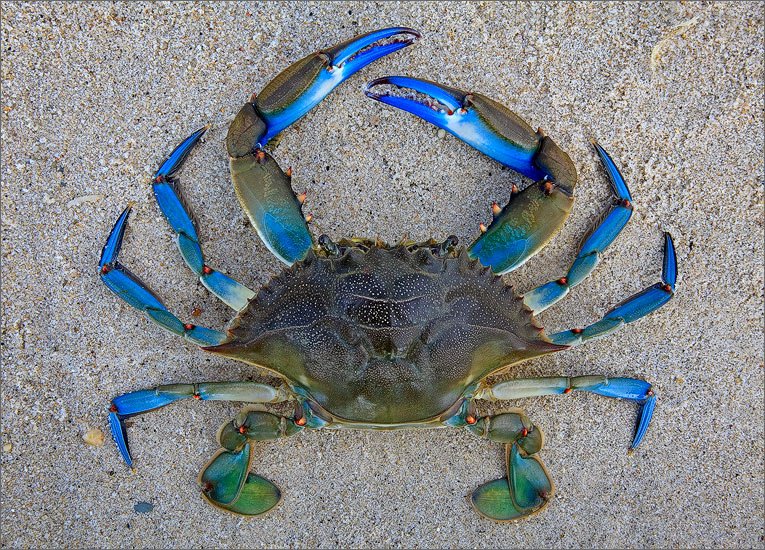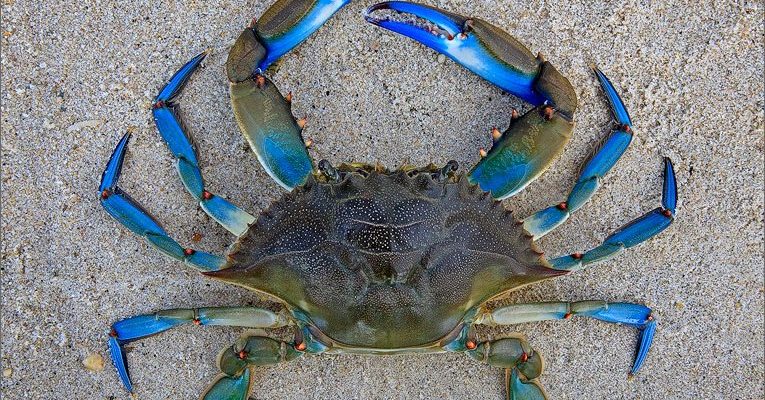
Imagine being lost in a sprawling maze, but instead of walls and corners, you have to navigate through murky waters filled with plants, rocks, and other animals. For blue crabs, this means using their senses in unique ways to help them navigate their underwater world. From using their eyes to spot predators to utilizing their impressive sense of smell, blue crabs are well-equipped to handle the challenges of their environment.
Understanding how blue crabs navigate and communicate is like peeling back the layers of a complex puzzle. It’s not only interesting but also crucial for appreciating the vital role they play in our ecosystem. So, grab a cup of coffee and let’s dive into the amazing world of blue crabs, their navigation skills, and their methods of communication.
The Blue Crab’s Habitat and Navigation Techniques
Blue crabs primarily inhabit estuaries and coastal waters, where saltwater mixes with freshwater. These environments are like bustling highways for blue crabs, filled with plenty of food and shelter. They are skilled at navigating these waters, using a combination of vision, smell, and even touch to find their way.
First off, let’s talk about their vision. Blue crabs have compound eyes, which provide a wide field of view. This means they can easily spot predators or prey around them. Their eyes are sensitive to movement, allowing them to react swiftly to threats. Imagine wearing a pair of glasses that not only help you see far away but also catch every little movement in your environment. That’s what blue crabs experience.
Another important navigation tool is their incredible sense of smell. Crabs have specialized sensory organs located on their antennae, allowing them to detect chemicals in the water. This helps them find food or even mates from a distance. It’s like having a built-in GPS system that guides them to their favorite food sources or potential partners, even when they can’t see them.
Lastly, blue crabs use touch to navigate. They have sensitive hairs on their legs that can detect vibrations in the water. This ability helps them sense nearby predators or other crabs, allowing them to react appropriately. Picture walking through a dark room where you can feel the walls and objects around you—this is how blue crabs navigate their underwater world.
Communication Among Blue Crabs
Communication is essential for blue crabs, especially in their social interactions. They use a mix of visual signals, chemical cues, and even sounds to communicate with one another. Let’s break down these fascinating methods.
First, let’s consider visual communication. Blue crabs can display various colors and postures, especially during mating season. A male crab may show off his bright blue claws or wave them around to attract a female’s attention. It’s similar to a guy trying to impress someone on a date by showing off his new jacket or dance moves. This visual flair is crucial for courtship and establishing dominance among males.
Next up is chemical communication. When crabs release certain chemicals into the water, other crabs can smell them and understand important messages. For example, a female crab may release pheromones to signal she’s ready to mate. This chemical language is essential for reproduction and social dynamics within crab communities. Imagine sending a text to someone across the room—this is how crabs convey messages through the water.
Lastly, blue crabs can produce sounds by rubbing their claws together. This form of acoustic communication is less common but can serve various purposes, such as signaling distress when threatened or establishing territory. You might think of it as how we shout or whistle to get someone’s attention. Even in the underwater world, expressing oneself can take many forms!
How Environmental Factors Affect Navigation
Various environmental factors can impact how blue crabs navigate. Changes in water temperature, salinity, and currents can influence their behavior and movement patterns. Understanding these factors is essential for their survival.
Temperature plays a crucial role in a blue crab’s metabolism. When waters are warmer, crabs tend to be more active, moving around to search for food. However, if the water temperature gets too high (or too cold), they may find it challenging to navigate effectively. Imagine how sluggish you feel on a hot summer day; crabs experience similar effects when the temperature isn’t right.
Salinity is another critical factor. Blue crabs thrive in brackish waters, where saltwater and freshwater mix. When there’s a significant change in salinity—like after heavy rain—crabs must adjust their behavior. Too much freshwater can make it harder for them to find food or avoid predators, so they might move to areas with better conditions, just like how we seek shelter during a storm.
Lastly, currents can alter a crab’s path. Strong currents can displace them from their preferred habitats, leading to challenges in navigation. It’s like trying to walk against a powerful wind; it can be exhausting and disorienting. Blue crabs must adapt to keep themselves safe and well-fed.
Impact of Human Activity on Blue Crab Navigation
Human activities, such as fishing, pollution, and coastal development, can significantly impact blue crab navigation and communication. Understanding these effects is crucial for conservation efforts and the long-term health of blue crab populations.
Overfishing is a significant concern for blue crabs. When fishing pressure is too high, it can deplete their numbers, disrupting their natural behavior and navigation patterns. If there aren’t enough crabs to communicate with or mate with, the population can decline rapidly. It’s a little like a crowded party where everyone is trying to talk; if too many people leave, the remaining ones struggle to keep the conversation going.
Pollution in coastal waters can also affect blue crabs. Contaminants can alter the chemical signals they rely on to communicate and navigate. For instance, if the water is polluted, chemicals may prevent crabs from detecting pheromones, making it harder to find mates. It’s like trying to follow a recipe while someone keeps changing the ingredients on you—it makes everything much trickier!
Finally, coastal development can lead to habitat loss for blue crabs. When wetlands and estuaries are destroyed, crabs lose their natural homes and the resources they depend on. Think of it as moving from a spacious house to a cramped apartment; the quality of life diminishes significantly. Protecting blue crab habitats is crucial to ensuring their navigation and communication systems remain intact.
Conservation Efforts and Their Importance
Given the challenges blue crabs face due to human activities, conservation efforts are more important than ever. Protecting their habitats and ensuring sustainable fishing practices will help maintain vibrant crab populations and the ecosystems they support.
Many organizations and local governments are working to establish fishing regulations that help maintain crab populations. These rules might include limits on how many crabs can be caught or specific seasons when fishing is restricted. By setting these guidelines, we can allow blue crab populations to rebound, ensuring they thrive in their habitats.
Another essential aspect of conservation is habitat restoration. Efforts to restore wetlands and estuarine environments can significantly benefit blue crabs. By creating healthy ecosystems, we ensure that crabs have plenty of food and shelter, allowing them to navigate and communicate effectively.
Education is also a critical tool in conservation. By raising awareness about the importance of blue crabs and their role in the ecosystem, we can encourage responsible fishing practices and habitat protection. By creating a community of aware individuals, we can work together to create a healthier environment for blue crabs and other marine life.
In conclusion, understanding how blue crabs navigate and communicate opens up a captivating world of underwater life. These creatures use various techniques to find their way around and connect with each other, showcasing nature’s ingenuity. As we continue to explore and learn about blue crabs, let’s also remember the importance of protecting their habitats and supporting conservation efforts. After all, the health of our planet depends on the tiny wonders that often go unnoticed beneath the waves.

